Also known as Richi Mahjong, Japanese Mahjong is a variation of the traditional game.
The basic rules remain the same but there are additional rules called richi and dora are used too.
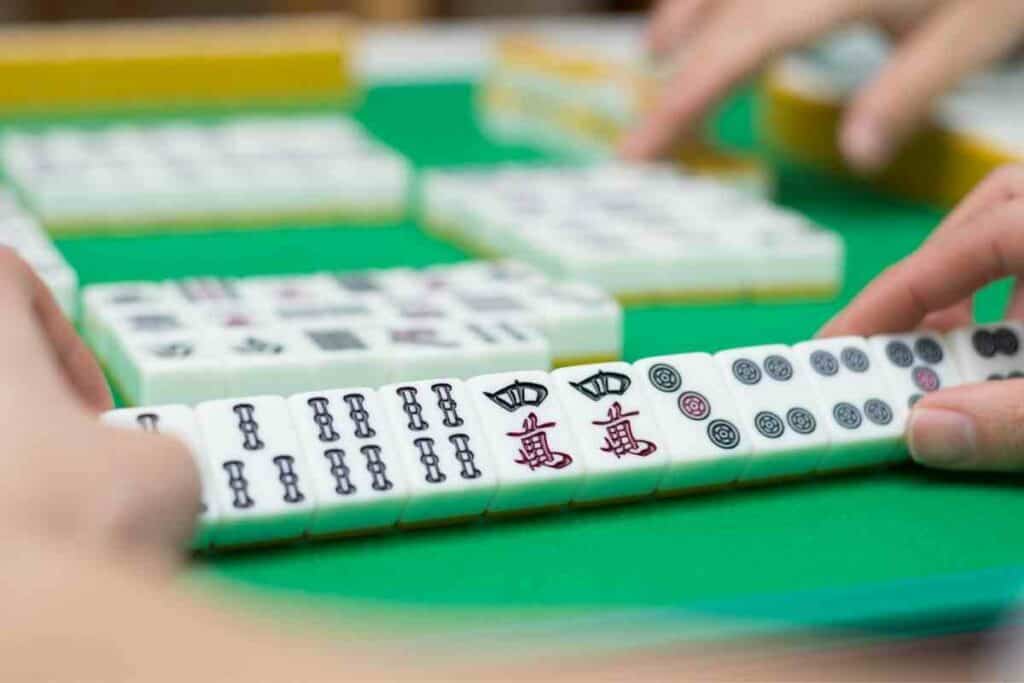
Japanese Mahjong refers to chii, pon and kan, instead of chow, pung and kong, so there are terminology differences too.
Table of Contents
The History of Japanese Mahjong
The game of Mahjong was brought to Japan by Saburo Hirayama, a soldier, in 1924.
He started up a mahjong club, school, and parlor in Tokyo and the game’s popularity increased hugely.
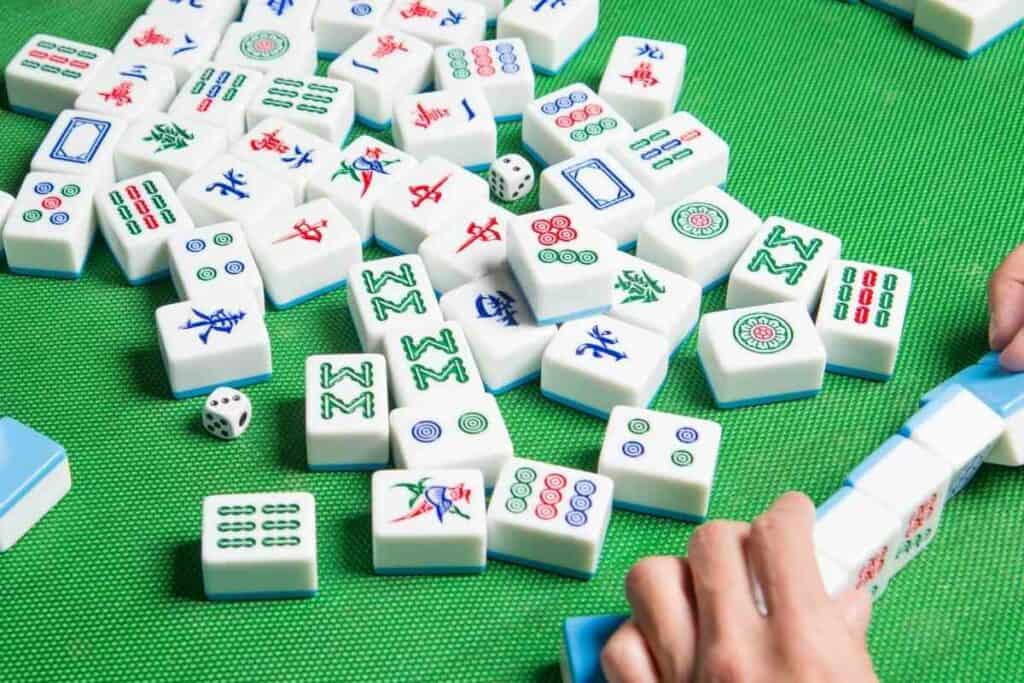
When it was growing in popularity, it became a simplified version of the original Chinese game. After this, more rules were added to further increase its complexity again.
Nowadays – Mahjong is the most popular game of its kind in Japan. There are around nine thousand mahjong parlors and eight million players. Parlors bring in hundreds of billions of yen each year to the Japanese economy.
There are even anime and manga devoted to comic and dramatic mahjong situations.
There are also mahjong games in video arcades – and even strip mahjong games!
Setting up Japanese Mahjong
Part of the Japanese Mahjong rules differences is in how it is set up.
The game includes 136 tiles which are mixed before being arranged into four walls that are seventeen tiles across and two stacks in height.
Twenty-six of these stacks make up the starting hands, a dead wall is created with seven and the rest of the stacks make up the playing wall.
Booking.comJapanese mahjong rules has 34 tile types and four of each type.
There are three tile suits (like standard mahjong). These are pin, sou, and wan (circles, bamboo, and characters).
There are also tsu tiles (honor), which are split between dragon tiles and wind tiles. There are no season or flower tiles. The numbers are simply the Japanese pronunciations.
Basic Japanese Mahjong Rules
Lots of the basic mahjong rules apply to Japanese mahjong.
Let’s look at these in more detail.
Melding
A player can make an open group (a meld) when they call for a discard by another player.
This meld is revealed and then the player makes a discard. When a player calls for another’s discard, the hand and group are both open.
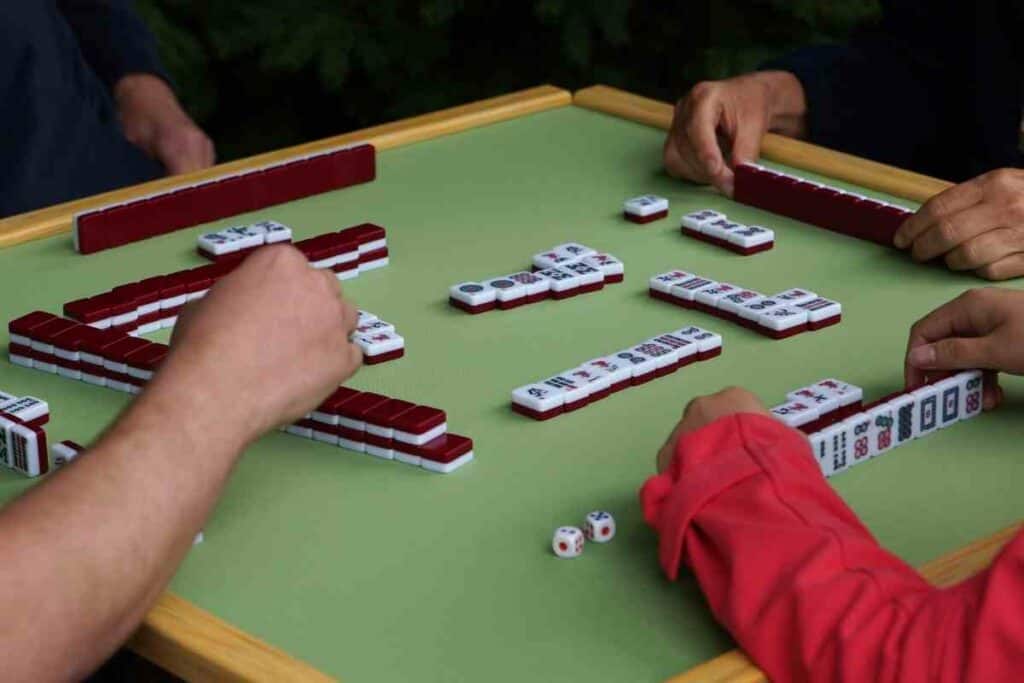
When the discard is from a closed hand and is a winning tile, the group and the discard is classed as open though the hand remains closed.
The calls are the same as standard mahjong just with Japanese terms being used.
Chii
Players call chii when they make a sequence, which is three of the same suit tiles consecutively, by using a discard tile from the player on the left (the one prior).
The meld is placed face up to the right of their hands. The discarded tile is placed on the leftmost side and sideways to show it was from the discard pile.
Pon
Players call pon when they make a triplet, which is three identical, same-suit tiles, using a discard by another player.
The discard tile is placed sideways to show those from whom it was taken.
Kan
A meld can be made with four identical, same suit tiles or honor tiles.
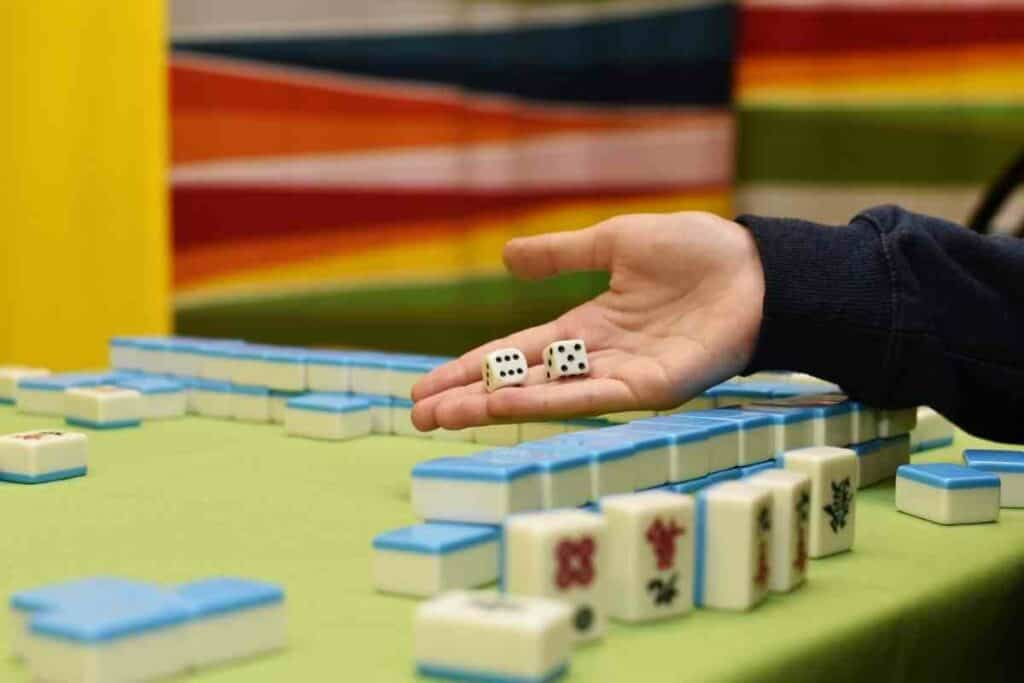
When a kan is called, the nearest dora is flipped.
Players then have to take another tile from the dead wall end to supplement it.
There are three distinct quads, which are all called by kan:
- Open quad – made using a discarded tile by another player and they have three of the same in their hand. All four tiles are revealed face up and one is sideways, indicating who the discard tile belonged to.
- Close quad – made using four identical tiles from their own hand. This is placed on the table to the right with two tiles facing down and two facing up. Another tile is then drawn from the dead wall. Closed quads don’t use any discards and doesn’t open a hand.
- Added open quad – an added open quad is when players add a tile to an open meld either with a tile they already have or with a self-drawn tile. This tile is added sideways on the top of the open meld’s sideways tile.
Additional Japanese Mahjong Rules
As well as the basic rules, there are additional Japanese mahjong rules that apply.
Yakuman and Yaku
Yaku is a specific tile combination or a condition.
With for melds and one yaku, you have a winning hand. Each yaku is given a han value.The han doubles.
Yakuman is the value given to limit hands. These are hard to get.
Riichi
When a player declares riichi, they are declaring a type of yaku and a ready hand.
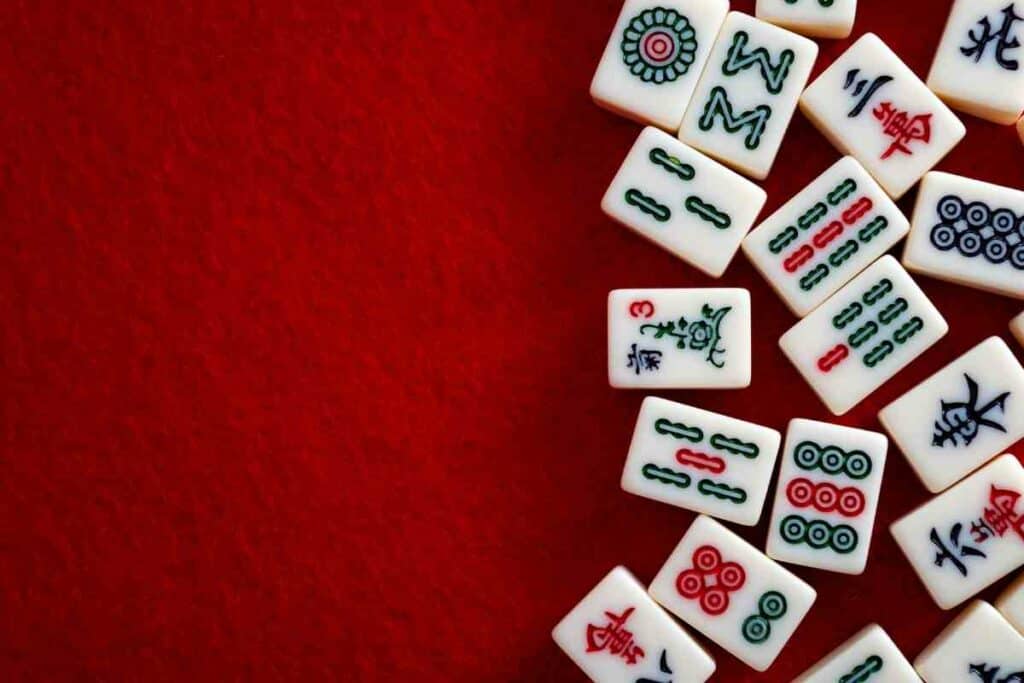
This is said when a player only needs a single tile to complete a tenpai or legal hand, and he hasn’t claimed any discards to make an open meld.
When a player declares riichi, he is able to win with a discard, even if he doesn’t have a yaku.
After riichi is declared, the player pays a deposit and can’t change their hand unless it is to form certain types of closed quads.
Dora
These are bonus tiles. Any tile can be a dora and add han values to winning hands.
Dora isn’t counted as yaku. You can’t have a winning hand with dora unless you also have one yaku.
When a Hand Starts – The tile that is on the third stand at the far end of the dead wall is turned and is the dora. The succeeding tile is then recognized as dora.
It is believed that dora means dragon, but it hasn’t got anything to do with Japanese Mahjong’s dragon tiles.
Japanese Mahjong Rules and Scoring
Japanese Mahjong has a unique scoring system, which incorporates two variables called fu and than.
When a player wins a hand, they score points on the two values and these match up to a table.
When the han is five or over, the fu isn’t needed (but is still countable).
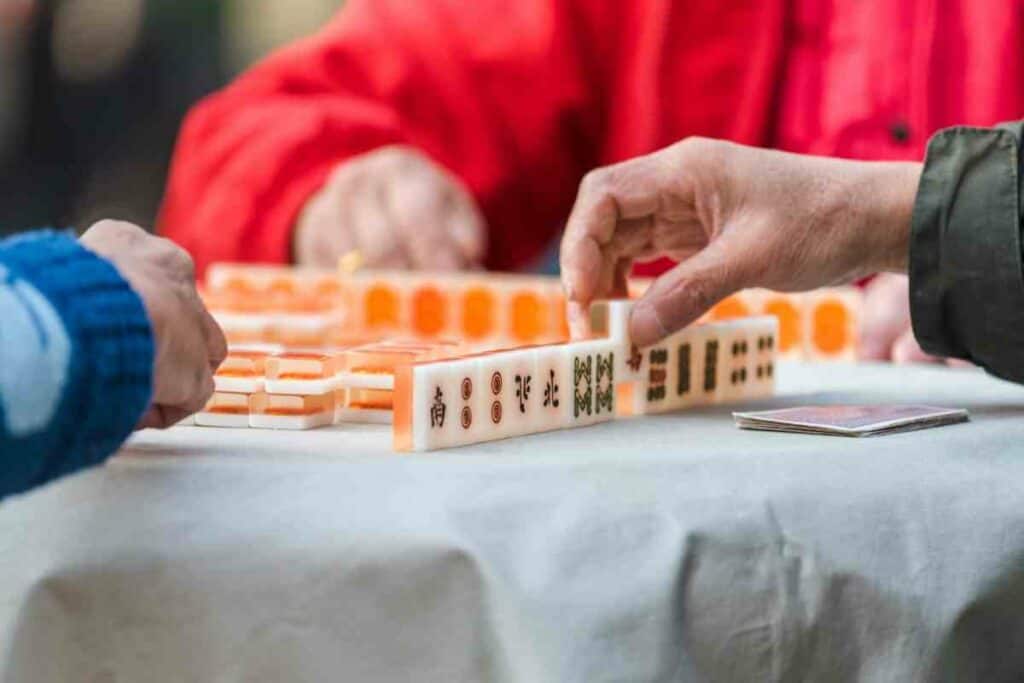
In terms of winning, there is a difference between when a player wins from a discard or wins from the wall.
Players call ron if they are pickup up a tile from the discard to winor tsumo if the win is self-drawn.
When Ron Is Called: Whoever discarded the tile pays the points. When tsumo is called, the three non-winning players pay out the points between them.
Discard Differences
In other variants of mahjong, all discards are put into the center of the table in a rather disorganized way.
In Japanese mahjong rules, however, each discard is placed neatly in front of every player. This means that all players build up a discard pile.
These are typically in a row of six.
Sacred Discards
Furiten are called sacred discards and for three situations, you can’t win by using a tile discarded by another person:
- You can’t win with a discard if there are possible winning tiles in your own discarded tiles, including tiles in other players’ open melds.
- When a winning tile is discarded and not called, the person can’t win on another discard until it’s their next go. This is called a temporary furiten. It even applies if it wasn’t possible to call the winning tile because the hand had no yaku. Usually, when another player makes an open meld, a player’s temporary furiten doesn’t end.
- After riichi is called, a temporary furiten becomes permanent.
Chombo – Penalizations
There are many circumstances whereby players can be penalized.
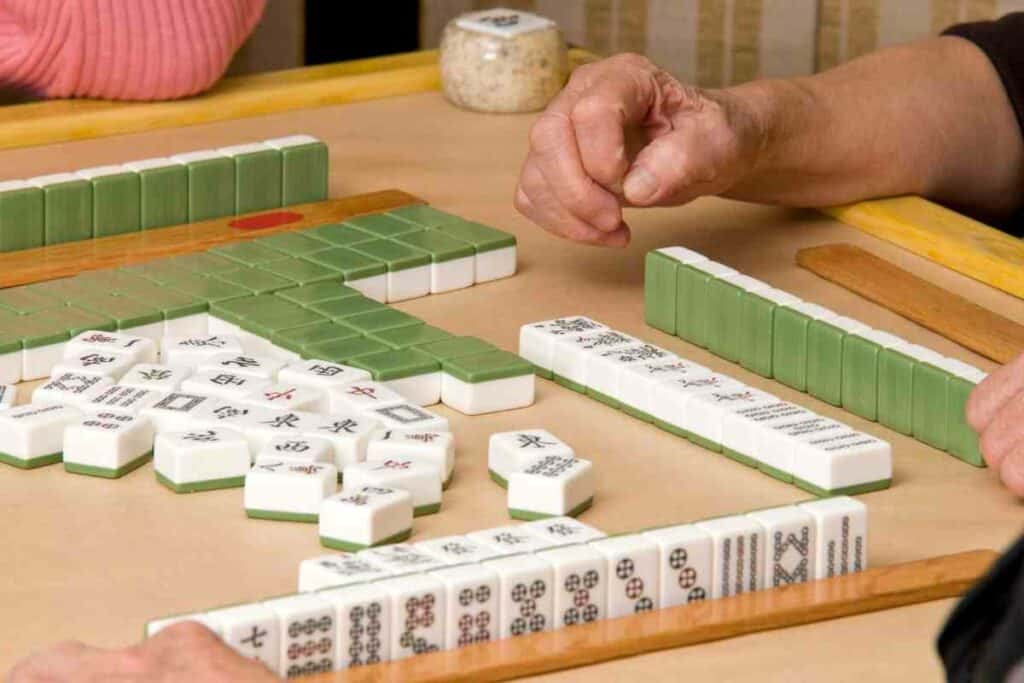
These include:
- Furiten ron – calling “ron” when furiten applies
- Gotsumo – mistakenly calling tsumo
- Noten riichi – not being in tenpai yet calling riichi
- Tahai – having too many tiles
- Machi ga kawaru riichi-go no kan – closing kan after riichi (if the player’s waits are changed by the kan)
- Yamakuzure – this means ‘landslide’ and is when the wall is damaged and is no longer recoverable.
Japanese mahjong rules – ending the game
The game will end usually after the South round (prevailing wind).
Bankruptcy
If a player’s score is below zero (i.e., negative), the game ends.
Runaway Victory
Agari-yame, literally meaning ‘win and stop,’ occurs when a dealer decides to use this when he’s won a hand.
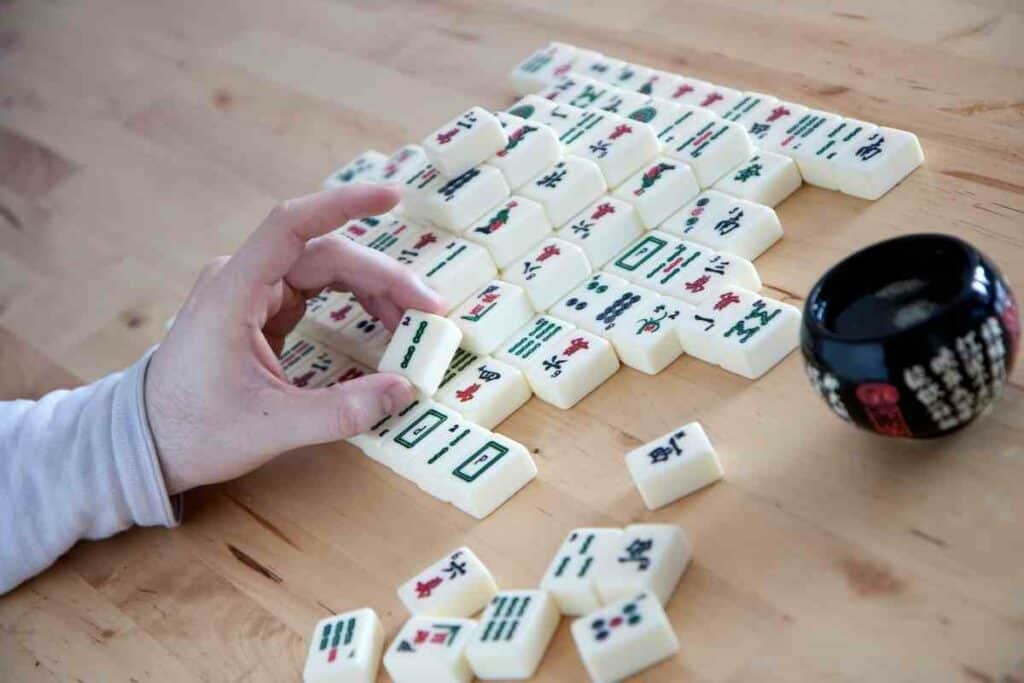
For example, when he is the top player.
Continuing to the West
If the top player has a score below 30,000 at the end of the final round, another round to the West shanyu can happen.
Rules dependent, this can also be followed by another East round. All extra rounds end when one player reaches at least 30,000 points.
Japanese mahjong rules – final thoughts
If you’re lucky enough to be close to one, you can find Japanese mahjong clubs outside of Japan.
They exist in Asia, South America, North America, and Europe, though some countries only have a handful of players.
There are also Japanese mahjong tournaments including the World Riichi Championship and the European Riichi Championship.
The World Riichi championship has only occurred twice – once in 2014 and again in 2017. It was first organized by a set of brothers, Valérian and Quentin Thomas, of French origin.
There was going to be a third-round, but the Covid-19 pandemic meant it was postponed.
Also Read
- The Forbidden Japanese Island That Will Give You Nightmares
- Miss Japan Forced to Wear Sailor Moon Costume Since Childhood: Claims It’s the Secret to Her Success
- Essential Guide to Japan VPN: Secure Access and Privacy for Travelers
- Sumo Wrestler Suit for Adults by TOLOCO: Best Sumo Suit?
- Eki Stamp Book (Gotta Collect Them All!)
- Explore the Fascinating World of Japanese Rubik’s Cubes









